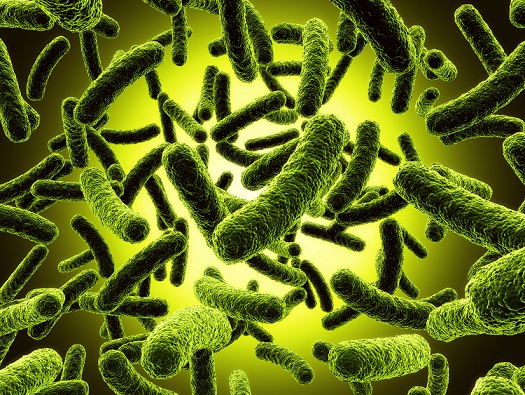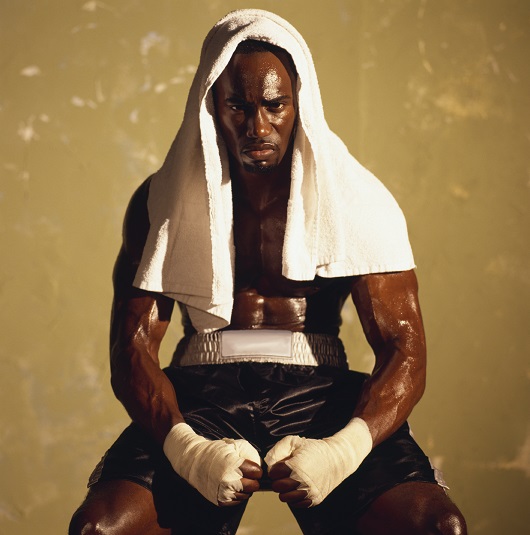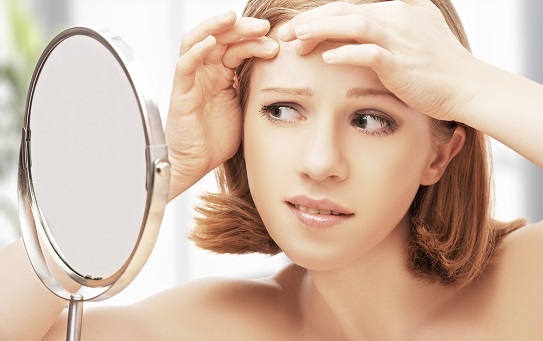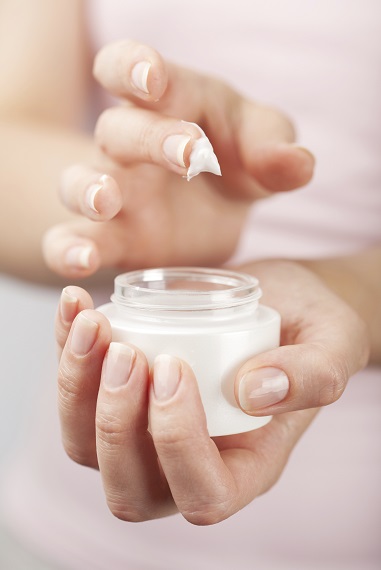 Here’s the first thing to understand about bacteria: its role in acne is often overstated.
Here’s the first thing to understand about bacteria: its role in acne is often overstated.
Every year, along with Accutane, dermatologists dish out bacteria-killing cleansers and face wipes to millions of patients. If you’ve ever been prescribed Benzoyl Peroxide cream, it was supposed to help by killing p.acnes bacteria. The market for all manner of antibacterial topical treatments is worth billions.
However, they’re clearly not working. Why? Mainly because bacteria is only one piece of the puzzle.
Tackling chronic inflammation, nutritional deficiencies and sebum oxidation is just as important. If you’ve only been using BP then there’s a goldmine of fresh opportunities for you to tap.
But bacteria is still important. It’s a complicated subject, so today, we will cut through the nonsense and allow you to understand the science properly. We will discuss the following topics:
- What is p.acnes bacteria?
- How does p.acnes cause acne?
- How do overgrowths happen?
- Why do acne patients have more p.acnes in their pores than average?
- What can be done about it?
Read on, and you’ll gain some of the most important acne knowledge there is…
Propionibacterium acnes – the bacteria acne patients fear
 Your skin is covered with endless species of bacteria, and propionibacterium acnes is the one responsible for pimples. Firstly, p.acnes is not unhealthy at all. Moderate amounts are found in the natural skin flora of most adult humans alive.
Your skin is covered with endless species of bacteria, and propionibacterium acnes is the one responsible for pimples. Firstly, p.acnes is not unhealthy at all. Moderate amounts are found in the natural skin flora of most adult humans alive.
It’s a member of the gram positive family, and was formerly known as Bacillus acnes or Corynebacterium acnes.
Read Annihilate Your Acne – get the diet that could transform your skin!
P.acnes is oxygen tolerant, but mostly prospers and grows in lower-oxygen environments. Hence, p.acnes is mostly found deep within the pores and hair follicles of your face, rather than the surface. P.acnes uses sebum, the oil produced by your sebaceous glands, as a primary fuel source.
It’s also found naturally in your neck and chest pores, and areas of the intestine. Certain strains of p.acnes actually have beneficial roles, like manufacturing immune agents which target and destroy viruses trying to enter your skin.
There are at least 70 strains, and according to a study published in the Journal of Investigative Dermatology, clear skinned patients have strains of p.acnes which rarely appear in acne patients. Likewise, acne-prone skin had strains which are unheard of in clear skin (update 27/7/17: here’s a full article on why certain strains are much worse).
The big question is – what allows these evil strains to grow at the expense of the friendly ones?
The answer is simple: the villainous strains thrive in blocked pores. When a skin pore fills up with sebum and dead skin cells, the oxygen tension falls slightly, and low oxygen is p.acnes’ favourite environment for exponential growth.
Continuing this growth is the massive overload of sebum (oil) which originally blocked that pore. P. acnes bacteria digests sebum as its primary energy source, using specialized enzymes called lipases which break down its fatty acids and triglycerides, like squalene.
Making matters worse is the many metabolic by-products these digestive enzymes create. The most abundant is propionic acid, a harmless substance which gives Propionibacterium acnes its name. But several of the metabolites and waste products are highly comedogenic, meaning they block your pores. In fact, it’s theorised that the p.acnes organism does this deliberately, increasing the potential for its own growth by reinforcing the conditions it thrives in.
Next – the 6 best vitamins and minerals for naturally clear skin
There’s even evidence that the mere presence of p.acnes stimulates even more oil production. Basically, p.acnes is terrific at entrenching itself. Once the overgrowth starts, it begins a downward spiral.
P.acnes can also multiply so fast that it creates sticky clumps of bacteria called biofilms, which anchor and defend the existing bacteria in the pore. Biofilms are a key feature of long term infections; they’re common in stubborn diseases like candida and athlete’s foot. Once in place, these tough bacterial structures make unclogging the pores far more challenging.
Basically, any condition leading to high oil production and/or blocked pores can help the bad strains of p.acnes to grow. Unbalanced hormones, excessive keratin production, vitamin deficiencies, and even commonplace conditions like sleep deprivation are all reasons why your pores are full of bacteria, and your clear-skinned flatmate’s aren’t.
How p.acnes triggers an acne explosion
P.acnes mainly creates pimples in the pores it inhabits thanks to inflammation. Firstly, when the oxygen tension falls, p.acnes begins manufacturing a compound called porphyrin that reacts with oxygen to create free radicals, which themselves cause chain reactions that weaken the structure of skin cells. The bacterial debris, metabolic by-products, and fatty acids produced during oil digestion are also highly inflammatory.
Why bread and pasta are a massive cause of acne
However, this more direct inflammation pales in comparison to the real threat: your immune system’s large response to p.acnes.
Many of the individual compounds making up p.acnes are easily recognised by your immune system as “enemy” molecules. This includes DNA, components of the bacterial cell wall like lipopolysaccharides, peptidoglycans and proteins, and the metabolic by-products mentioned above. Even dead p.acnes bacteria can be viewed as a threat and treated to a response.
With your pores clogging rapidly and p.acnes multiplying ever further, your immune system believes that it has a large threat to deal with. Its solution is to bombard p.acnes with a barrage of inflammatory chemicals. White blood cells, leucocytes, and cytokines like interleukin-6 and TNF-a are all dispatched to your pores.
They usually succeed in their mission to give p.acnes a good kicking. The problem is the massive collateral damage. In the process, these chemicals weaken the surrounding pore; they redden the cells and swell up the surrounding tissues. Immune actors like neutrophils spew out free radicals which unleash chain reactions of havoc.
Much like a wound from a bicycle crash swells up after your immune system deals with it, so too does your pore. It develops all the characteristics of a pimple that we know and love.
These are the basics of how bacteria causes acne. Your pores get blocked, p. acnes overgrows like mad, and your immune system launches an over-the-top assault against it.
Why normal antibacterial products fail
 Prescriptions like BP and antibiotics do make sense; their job is to blast p.acnes off the face of the earth so that the resulting immune response doesn’t happen. But most of the antibacterial treatments used by millions are severely flawed.
Prescriptions like BP and antibiotics do make sense; their job is to blast p.acnes off the face of the earth so that the resulting immune response doesn’t happen. But most of the antibacterial treatments used by millions are severely flawed.
Firstly, we have Benzoyl Peroxide, which breaks down into benzoic acid and oxygen upon application. The oxygen forms free radicals, which enter your skin pores and efficiently destroy p.acnes. Consequently, BP does help a minority of acne patients…
…but the free radicals also cause massive collateral damage. Roughly 12% of your sebum consists of squalene, and oxidised squalene is a clogged pore disaster; it forms a by-product called squalene peroxide, which both increases local oil production and creates huge clumps of dead skin cells. Much of our advice here is geared towards protecting your sebum from free radical sources, and BP is a classic one. That’s why it commonly makes acne worse in the long run. It indirectly clogs your pores, and the free radicals also add inflammation, weakening your skin’s structural cells.
It’s a similar story for other antibacterial products; they rely far too much on brute force. Killing bacteria alone is not always the solution.
As for antibiotics, they’re even worse over the long run, because p.acnes is rapidly gaining resistance.
Since 1985, the most common acne antibiotics have been erythromycin, tetracycline, doxycycline, and minocycline. Originally, they killed p.acnes well, but both topical and oral antibiotics have been dished out with little restraint. They now increasingly failing to work, especially in Europe and America where usage is heaviest. According to one study, resistance to P. acnes develops in 50% of antibiotic users, both topical and oral.
Get the eBook – learn why eating fish can improve acne by 42%
Furthermore, many antibiotics have side effects. Doxycycline increases sun sensitivity, worsening your skin’s armour against UVB radiation and making your face more prone to free radical damage. Minocycline does the same, and also discolours your skin.
Antibiotics can worsen your skin’s equilibrium and may not even kill bacteria in the short term anymore.
It’s not just the skin either, as minocycline can decimate healthy bacteria in your gut. Diverse gut flora is important for brain health, heart disease and also acne, by protecting your gut lining and keeping nutrient absorption up, including great ones for acne like zinc. Friendly bacteria can also suppress acne-causing food allergies.
The secret is prevention
 Consequently, I don’t recommend any of the conventional therapies to kill p.acnes.
Consequently, I don’t recommend any of the conventional therapies to kill p.acnes.
In fact, the entire strategy of focussing on p.acnes colonies alone is flawed. An antibacterial spray is not a long term solution. You’re only treating a symptom, not the problem itself. BP will never fully suppress p.acnes, once and for all. If the bacteria still has the sebum and low oxygen tension it needs, it will always keep regenerating.
Instead, you have to eliminate the environment in which p.acnes prospers. P.acnes will never multiply beyond perfectly safe and healthy levels if your pores aren’t clogged.
Therefore, instead of using BP, a better strategy is to boost your vitamin A, which controls the sebum output of your sebaceous glands. P.acnes will struggle to gain a foothold in the first place, and you’ll achieve a big reduction without resorting to a face wash every day.
7 acne-clearing topical treatments which are 100% natural
You could also eat less carbohydrates and get the hormone insulin under control, you could take a zinc supplement to lower keratin production and stop dead skin cells from sticking together, and you could avoid air pollution to prevent your sebum from oxidising.
Likewise, you can render your p.acnes totally harmless if you get your inflammatory responses under control.
We discussed earlier how the barrage of cytokines and white blood cells unleashes serious collateral damage. Well, this only happens when your body is in the sorry state of chronic inflammation. That’s when your immune system is so starved of vital nutrition or exposed to so many threats that it cannot control itself, and assaults the slightest threat (like p.acnes) with a full scale war. For many acne patients, p.acnes itself is barely the problem.
Nowadays the average lifestyle is full of sugary fruit juice and coke, trans-fats, and phthalate chemicals lurking in ready meals. Hence, chronic inflammation is an epidemic that scientists are only just beginning to uncover, playing roles in heart disease, cancer, dementia (by inflaming brain cells) and particularly, chronic joint pain and muscle weakness.
You too might have a wild immune system. In this article, we discussed how it’s one of the two biggest causes of acne.
Why does this matter? Well, if you take steps to lower bodily inflammation, like avoiding sugar, trans-fats, and eating more nutrients that constrain the immune system (like zinc and omega 3s), you can easily have mild p.acnes overgrowth in your pores, but no acne in sight. If the attack on p.acnes is mild and controlled, then the collateral damage won’t redden and swell the pore up anywhere near as strongly.
Remember, p.acnes rarely causes acne itself. It’s your body’s response to it that does the damage.
How to ruthlessly stamp out p.acnes
With that said, you might be an acne patient who pushes things to the limit. You might have severe acne and want to employ every strategy you possibly can.
In that case, killing p.acnes is still a good strategy. You need to ignore BP, antibiotics, or any over-the-counter antibacterial treatment. Some excellent natural remedies include…
Sweat – despite being falsely believed to clog your pores, sweat is actually great for acne because it contains an antibacterial peptide called Dermcidin. It kills p.acnes excellently, just as effectively as topical antibiotics, yet bacteria cannot develop resistance to it.
Zinc – the number one mineral for clear skin (reduces acne by 49.8%)
Sweat is also terrific at inundating your entire face, compared to a BP cream which you have to apply to every single pore. Exercising, visiting a sauna, or walking around on a hot day are all acne-friendly sweat solutions.
Blue light devices – easily the best of all the high-tech, scientific acne treatments which could only possibly be available in the modern age. The porphyrins in p.acnes’ cell walls are very sensitive to blue light wavelengths and when exposed, they mutate, generate free radicals, and cause the bacteria to self destruct.
Blue light devices can reduce acne by 40% after 4 weeks, solely through killing p.acnes. You can read about the science of blue light for acne here, and the best blue light devices here.
Natural topical treatments – some of my favourites are green tea, aloe vera, tea tree oil, and royal jelly, which all contain a wide array of antibacterial peptides and antioxidants. Moreover, they rarely cause the nasty side effects of Benzoyl Peroxide.
Take the example of raw honey. It partially kills p.acnes bacteria by breaking down into hydrogen peroxide on the skin. HP can cause irritation, but the soothing antioxidants of honey will cancel this out. For safety, it easily beats one harsh chemical like BP on its own.
Honey has tons of antibacterial compounds, including the famous methylgyloxal, which honeys are assigned a rating based on. There’s also the recently identified bee defensin 1, a peptide manufactured by bees’ immune systems and added to honey as they create it.
Other topical treatments stand out for oily skin (green tea) and inflammation (aloe vera), but raw honey is the greatest for killing bacterial overgrowth.
If you want to try it, you should always buy raw honey, so that the delicate compounds are preserved. Preferably, you should buy a bulk tub to save money as well. A perfect product which I have used in the past is this Y.S. Eco Bee Farms Raw Honey.
Wash your face with soap – it cannot be emphasised enough that simply washing off excess sebum will keep p.acnes on a leash. Sebum is their main food source. You don’t need to scrub every last drop away, because your dried out skin will then manufacture more sebum to compensate. Simply washing with cool (never hot) water and a natural soap, so that the skin no longer feels greasy, will work well.
I use this Dr. Bronner’s Peppermint Liquid Castille Soap every day. It’s made from all-natural oils like coconut oil, tea tree oil, and peppermint oil. Unlike commercial soaps or cleansers, Dr Bronner’s is very soothing and not harsh on the skin at all.
Your focus should always be dietary and lifestyle tactics, but those tricks are a good bonus nevertheless. Killing p.acnes can directly reduce the redness and swelling of acne substantially, if you use the right techniques.
Conclusion
The main thing you have to understand is that simply killing p.acnes day after day, with face scrub after face scrub, will never permanently cure you. It’s not a long-term solution. You’ll never be able to relax one day and just use tap water. You have to tackle acne from the inside out, not the outside in.
The true solution is simple: prevent p.acnes from overgrowing in the first place. Your first focus should be unblocking your pores (article) and curing chronic inflammation (article), and following the nutritional strategies in the articles to accomplish that.
Later, you can use the three antibacterial tricks above to control the existing overgrowth, particularly sweating, to kill the firmly established bacterial biofilms. After that, p.acnes won’t stand a chance.
NEXT: discover the root causes of acne and banish your pimples forever
Thanks for reading!